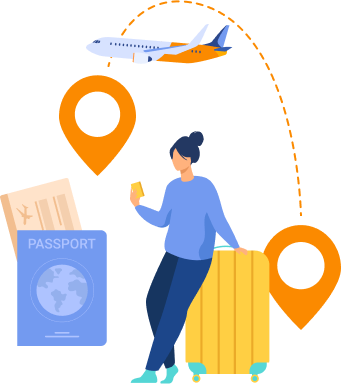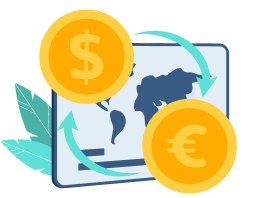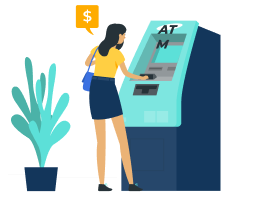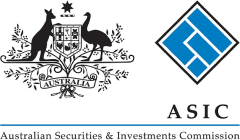Travel Money Card for Australians
The Revolut travel money card is a smart solution for Australians who want more control, better rates, and fewer fees when spending overseas. Say goodbye to confusing foreign exchange charges, multiple bank apps, and unplanned ATM fees.


How Does the Revolut Card Work?
Travelling abroad can be stressful, and with hidden fees and exchange rates, it can make handling money even harder.
The Revolut Travel Money Card is a prepaid debit card linked to your Revolut account, allowing you to spend in over 150 currencies at competitive exchange rates.
Whether you're shopping online or withdrawing cash abroad, Revolut automatically converts your AUD to the local currency at the real exchange rate, helping you avoid hidden fees and unfavorable rates.
With a travel card you can:
- Avoid poor exchange rates
- Eliminate surprise transaction fees
- Easily manage your money via an app
- Have complete control over your card
From work trips to solo or family holidays, you can access perks from instant currency exchange to budget tracking, travel perks, and even security features to help protect your money on the go.
How to Get a Revolut Card
Getting your Revolut card is simple, and you can do it straight from your phone.
To get started, head straight to the Revolut website and explore the travel card plans available to Australians. Whether you're planning a short getaway or a longer international adventure, you'll find an option that suits your needs and your budget.
- Follow the prompts on the Revolut site to sign up. You’ll just need your mobile number and a few personal details to get started.
- Revolut requires ID verification to keep your account safe and secure. You can do this quickly in-app by uploading a valid ID and snapping a quick selfie.
- Pick a plan that suits you from the options, including Standard, Premium, or Metal.
- Once you’re verified you can order your card via the app.
- Load up your Revolut account and you’re ready to start spending abroad!
Say goodbye to juggling multiple bank accounts or carrying wads of foreign cash. You can hold, exchange, and spend in more than 35 currencies directly from your Revolut app. Whether you're heading to Canada, Japan, the UK or beyond, your card adapts to the local currency.

Dynamic Exchange Rate For Multiple Currencies
One of the biggest advantages of using a Revolut travel money card is access to dynamic exchange rates across multiple currencies. No more worry about insufficient funds.
Whether you're hopping between countries on a round-the-world trip or just want to make sure you're getting the best rate while converting AUD to Canadian dollars, Revolut gives you the power to take control of your money in real time.
Unlike traditional banks that apply fixed rates with hidden mark-ups, Revolut uses the real exchange rate. This is the interbank rate, not inflated with extra fees. That means you’re getting more foreign currency equivalent for your Aussie dollars, every time you exchange.
Revolut gives you the flexibility to convert money when it suits you. Want to exchange AUD to EUR while the market’s in your favour? You can do that instantly from your phone. Need to switch back to AUD after your trip? No problem.
Easy Currency Conversion and Cash Withdrawals
The Revolut app lets you hold, convert, and spend in over 35 currencies, including:
- Europe
- Canada
- Japan
- Bali
- USA
- Fiji
- New Zealand
- UK
- Thailand
- China
- Vietnam
- South America
- Singapore
- South Africa
It’s all done in seconds, with no need to visit a money changer or guess what rate you’ll get at the airport kiosk. For your foreign exchange transactions it’s easy to transfer funds into your travel money card online account from the initial load to your hundredth. No matter what your personal needs are, you can access your available currencies, handle online purchases or visit every cafe you pass while on holidays! Set your own limits and access sufficient funds with your currency card.
Whether you’re planning a holiday, booking international accommodation online, or simply keeping an eye on currency trends, Revolut gives Australians a smarter way to manage foreign money.
Features and Benefits
Heading overseas? Managing your money abroad doesn’t have to be stressful. Revolut offers an all-in-one solution for spending, saving, and managing your money across borders.

Spend in 150+ Currencies Worldwide
Use your Revolut card in-store, online, or at ATMs almost anywhere in the world. Access the foreign exchange equivalent to get money all around the world. It’s accepted wherever Mastercard® or Visa is, making it the perfect companion for global travel.
Real-Time Currency Exchange at the Interbank Rate
Convert Australian dollars into foreign currencies like CAD, USD, GBP, or EUR at the real exchange rate. Avoid the hidden mark-ups that traditional banks often sneak in.


Easy App-Based Money Management
Track your spending, manage your budgets, freeze/unfreeze your card, and get instant transaction notifications.
Multiple Currency Wallets
Hold and exchange 35+ currencies directly in the app. You can load your card with AUD and convert only what you need.


Instant Security Controls
Lost your card while overseas? Instantly freeze it in the app. Found it again? Unfreeze just as easily. You can also disable contactless payments, ATM withdrawals, or swipe payments if needed.
Fee-Free Global ATM Withdrawals (Up to Your Plan Limit)
Depending on your plan, you can withdraw cash overseas without ATM fees up to a set limit each month


Budgeting Tools & Real-Time Notifications
Set up monthly spending limits, get daily or weekly summaries, and receive alerts when you’re getting close to your budget. Stay in control while enjoying your trip.
Virtual Cards for Online Payments
Get access to virtual debit cards straight away in the app. Use them for safe online shopping or bookings, and generate disposable cards for added security.


Choosing the Right Plan For You
Revolut offers several plans to suit different lifestyles and travel needs: Standard, Premium, and Metal. To decide which one will suit you, let’s break the plans in detail.
Standard
Free
- Free virtual card and basic physical card
- Spend in over 150 currencies at the interbank exchange rate
- Exchange up to $2,000 AUD/month without fees
- Withdraw up to $350 AUD/month from ATMs globally (some third-party ATM fees may apply)
- Real-time spending insights, budgeting, and savings tools
Premium
$11.99/month AUD
Everything in Standard, plus:
- Travel insurance including medical, baggage, and flight delay cover
- Higher ATM withdrawal limits, up to $700 AUD/month
- Unlimited currency exchange with no monthly limits
- Priority customer support
- Premium card designs
Metal
$28.99/month AUD
Everything in Premium, plus:
- Cashback on overseas purchases (up to 1%)
- Higher ATM withdrawals, up to $1,400 AUD/month
- Complimentary lounge access if your flight is delayed
- Concierge services and exclusive travel deals
- Sleek metal card with a premium feel
Which One Should You Choose?
Choosing what plan will suit you will largely depend on the frequency and length of your travel. If you only take a holiday once or twice annually, a basic plan may be all you need. But if you’re a frequent flyer or a digital nomad, upgrading could unlock extra value.
The free plan is perfect for first-time users or short trips. You get access to the Revolut app, can hold and exchange multiple currencies. On the other hand, the Metal plan is ideal for frequent globetrotters or business travellers.
Consider how often you’ll be converting or withdrawing foreign currency. Higher-tier plans offer increased limits on fee-free ATM withdrawals and currency exchange, which can add up to big savings on longer trips.
Tips for Saving Money While Travelling with Revolut
When you're travelling, every dollar counts. Luckily, a Revolut Travel Money Card account can help you save in more ways than one.
One of the biggest money saving features Revolut offers is the budgeting tool.
Revolut offers budgeting tools that let you set spending limits for categories like food, entertainment, and shopping. These features can help you avoid overspending and stay within your travel budget.
It also allows you to have full visibility over your spending in real-time, so you can manage your budget as you go. Set up spending notifications and keep an eye on your balance to avoid surprises. The app will also show you detailed breakdowns of where your money is going, helping you spot areas where you could cut back.
You’ll also save money when it comes to the hidden expenses that typically come with travel cards. Revolut helps you save money with minimal fees, unlike other cards.
With no hidden fees or poor exchange rates, it’s a smarter and cheaper option for everything from groceries to gifts. Plus, you’ll earn cashback and other rewards depending on your plan.
Each Revolut plan comes with different limits for free withdrawals and foreign exchange. Make sure you understand your plan's limits and how they affect your usage. Staying within those limits helps you avoid unnecessary charges and ensures you're using the card most cost-effectively.
Revolut can help you save money while you are enjoying your holiday, no matter where you are:
- In-app tracking for spending
- No surprise transaction fees
- Top-up in advance
- Discounts and perks
- Easy ATM withdrawal
By taking advantage of these tips, you'll not only save money but also streamline your travel expenses for a stress-free trip. Whether you’re exploring the Rockies in Canada, city-hopping through Europe, or relaxing in Bali, you can enjoy competitive exchange rates and real-time spending alerts.
Get Your Travel Finances Sorted with Revolut
Ready to take control of your travel finances? With Revolut, you can avoid foreign transaction fees, get competitive exchange rates, and manage multiple currencies all from one app. Whether you’re going to Canada, Europe, or beyond, Revolut has got you covered.
For your international travel you can utilise subsequent reloads, manage your leftover currency and easy to use card services.
Choose the plan that suits your travels, and start managing your money with ease.

FAQs
There are several great travel cards available for Australians, and Revolut is widely considered one of the most convenient and flexible options. It’s especially popular with travellers who want to manage multiple currencies, access competitive exchange rates, and track their spending in real time.
Yes, you can withdraw cash from ATMs around the world using your Revolut travel card.
Depending on your plan (Standard, Premium, or Metal), you’ll have different monthly ATM withdrawal allowances. Always check for potential ATM operator fees, which can vary by country and bank.
You can use a Revolut travel money card anywhere Mastercard is accepted. This includes millions of shops, restaurants, hotels, and online platforms around the world. It’s also great for ATM withdrawals and booking travel-related services.
Revolut offers a range of plans to suit different budgets and travel styles. The Standard plan is free and includes core features like currency exchange and budgeting tools. Paid plans like the Premium and Metal offer additional benefits such as higher ATM withdrawal limits, overseas medical insurance, and lounge access.
Revolut keeps fees low by offering real exchange rates and no foreign transaction fees on card spending within your allowances. With a travel money card account, it's easy to have visibility over your finances. From your transaction history, handling multiple currencies, emergency cash, payment solutions, accessing the prevailing exchange rate, or setting limits, it’s easy to manage your money, no matter what your financial circumstances are.
However, charges may apply if you exceed your plan’s ATM withdrawal limits or exchange large amounts outside market hours. It’s always a good idea to check the plan’s details so you know what’s included from currency conversion fees to exchanging money.
Yes, Revolut acts as a prepaid travel money card while you are jetsetting around the world. Simply load funds via a bank transfer from your Aussie bank account. It makes transferring money simple and you can reload funds as you need.
You can access your travel money card via the app or with a card, automatically transfer funds, and make cash withdrawals without scary reload fees that creep up on you.
Revolut has many features to keep you safe while you are on your trip overseas. If your card is stolen you can instantly freeze or unfreeze your card. You can also set spending limits, check your currency loaded, and receive real-time notifications for every transaction. Whether you're using your card online or abroad, Revolut's security features help you stay in control.
Affiliate Disclosure
This page contains affiliate links. If you choose to sign up for Revolut through one of these links, we may earn a small commission, at no extra cost to you. We only recommend services we genuinely believe offer value to travellers.

